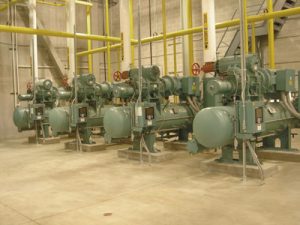When it comes to industrial refrigeration systems, your facility’s ammonia industrial refrigeration equipment is paramount to the success of your business. If you’re responsible for refrigeration equipment, it’s essential to know how to properly maintain it to avoid any costly or dangerous malfunctions. In this article, we’ll show you how to maintain your ammonia refrigeration equipment. Keep reading to learn more about this process.
Table of Contents
Inspect Refrigerant Levels and Pressure Regularly
Refrigerant is essential to the proper operation of ammonia industrial refrigeration systems. Insufficient refrigerant can cause the system to freeze up, while too much refrigerant can lead to compressor failure. To ensure that your system is running properly, you need to check the refrigerant levels and pressures on a regular basis.
If you notice that the pressures or refrigerant levels are not within the recommended ranges, take action to correct the problem as soon as possible. Failing to do so could result in equipment damage or failure.
Checking Hoses and Valves
The next important step in ammonia industrial refrigeration equipment maintenance is checking the hoses and valves. This is because any leaks in these parts of the system can cause big problems, from ammonia emissions to system failure.
First, make sure the equipment is turned off and disconnected from the power supply. Then, check each hose and valve for any leaks. If you find any, tighten the fittings or replace the hose as necessary.
Once you’ve checked and tightened all the hoses and valves, reconnect the equipment to the power supply and turn it on. If all goes well, you should be good to go. But, if you still see any leaks, go back and check the fittings again.
Clean the Condensate Drain
Refrigeration equipment that uses ammonia as the refrigerant requires a clean condensate drain to operate effectively and efficiently. The condensate drain removes water from the system that has condensed out of the ammonia gas. If this drain becomes clogged, it can cause problems with the equipment.
The most common problem caused by a clogged condensate drain is icing on the evaporator coil. This can lead to compressor failure if the ice builds up to a point where it blocks airflow through the coil. In addition, a clogged condensate drain can cause water damage to floors or ceilings below the equipment.
To avoid these problems, keep the condensate drain clean and free of obstructions. Debris such as dirt, dust, or insects can easily clog the small opening in the pipe. It’s also crucial to make sure there are no kinks in the line that could slow down drainage.
If necessary, regularly clear debris from the condensate drain using a shop vacuum or other suitable tool. Be careful not to damage or dislodge any part of the piping while doing this. If you notice that drainage is slowed for any reason, take corrective action right away to prevent further problems.
Check Belts and Fans Regularly
Belt and fan maintenance is critical to the safe and efficient operation of ammonia industrial refrigeration systems. Belts and fans wear out over time and need to be replaced to ensure the system continues to operate safely and at peak efficiency.
It’s vital to check the belts and fans regularly to ensure they’re in good condition and replace them as needed. Damaged belts or fans can cause the system to fail, which could lead to a dangerous situation.
Replacing the belts and fans on a regular basis will help keep the system running safely and at peak efficiency.
Maintaining Ammonia-Based Refrigeration Systems
Overall, it’s paramount to properly maintain ammonia-based refrigeration equipment to ensure its efficiency and longevity. Failure to do so can lead to decreased performance, increased energy consumption, and even equipment failure. By following the tips in this guide, facility managers can help keep their ammonia refrigeration systems running smoothly.
